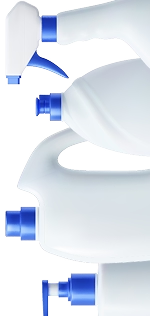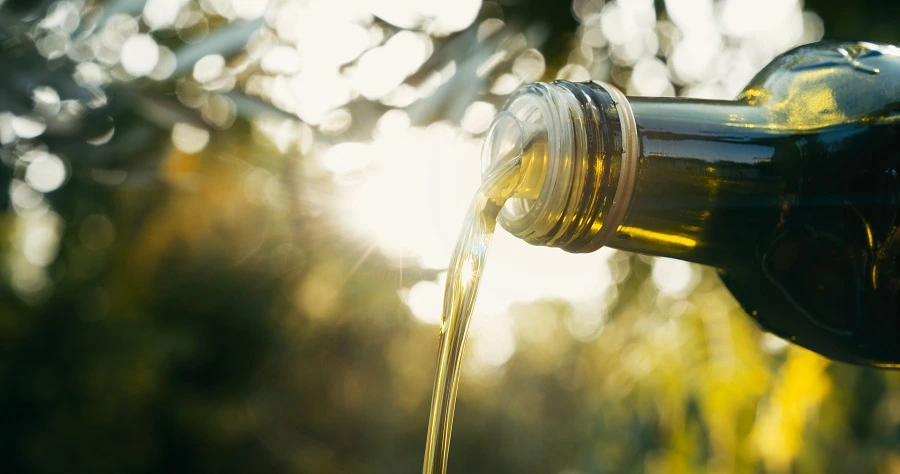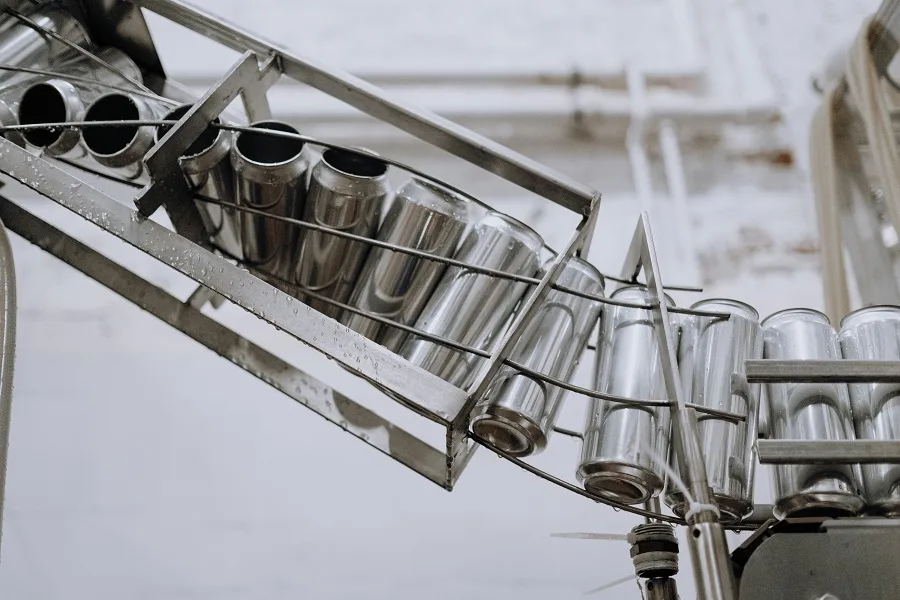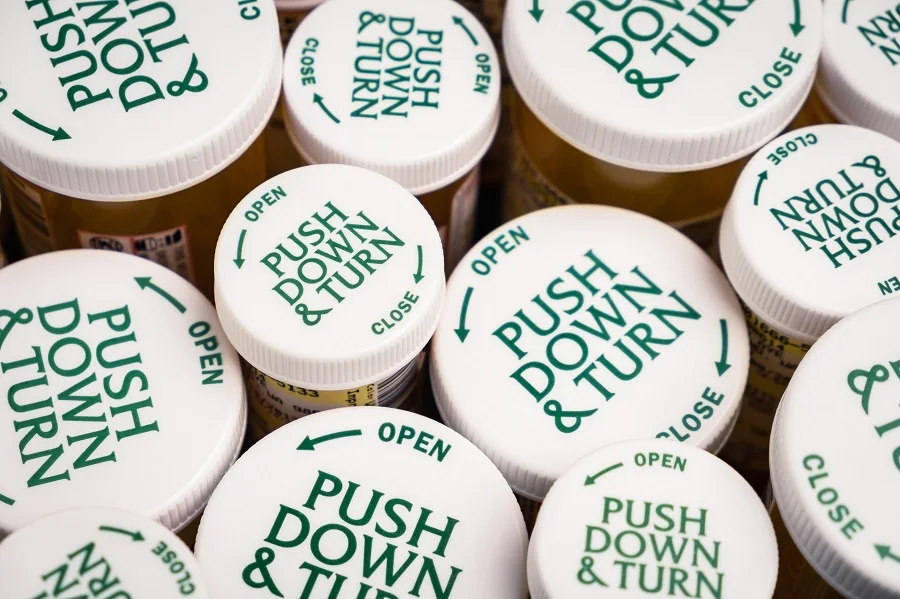Injection Molding Price: How to Estimate for Packaging Containers
- ByRobert "Rob" Starmann
- July 18, 2025
Injection molding is one of the most widespread manufacturing processes for mass-producing plastic parts. Understanding its costs is critical whether you're a product developer, manufacturing engineer, or business owner considering this production method.
In this comprehensive guide, the team at Ashland Container breaks down the factors that influence injection molding costs and provides the tools to estimate your project expenses accurately.
If you have questions or want to learn more, discuss your project with our Ashland Container's expert team. We'll help you navigate the complexities and optimize your manufacturing process with custom options.
What Is Injection Molding?
Injection molding is a manufacturing process where molten material (typically plastic) is injected into a mold cavity under high pressure. Once cooled and solidified, the part is ejected from the mold. This process is ideal for producing high volumes of identical parts with excellent repeatability and precision.
The process involves melting plastic material (usually pellets), injecting the molten plastic into a metal mold, cooling the material until it solidifies, opening the mold and ejecting the finished part, then repeating the cycle for the next part.
Why Understanding Injection Molding Costs Matters
The cost structure of injection molding is fundamentally different from other manufacturing methods. While it has higher initial setup costs (primarily for mold creation), the per-unit cost dramatically decreases as production volume increases.
Understanding injection molding costs helps determine if the process is economically viable for your project, enables accurate budgeting for product development, identifies opportunities for cost optimization, allows comparison of quotes from different manufacturers, and supports informed decisions about design modifications.
Key Factors Influencing Injection Molding Costs
The mold is usually the largest upfront expense in injection molding, ranging from $1.000 for simple 3D-printed molds to $100.000+ for complex steel molds for high-volume production. Here are some factors to keep in mind.
Molds are typically made through CNC machining (most common for metal molds), Electrical Discharge Machining (EDM) for intricate features, or 3D printing for rapid, lower-cost options suitable for shorter production runs.
Material Selection and Costs
The plastic resin used significantly impacts both part quality and overall cost. Material costs typically range from $1-5 per kg for standard plastics, to $15-50+ per kg for engineering or specialty resins.
When selecting materials, consider the full lifecycle costs. Higher-performance plastics may cost more upfront, but can reduce maintenance and replacement expenses long-term.
Production Volume Considerations
Production volume has perhaps the most dramatic effect on per-part costs, with larger volumes distributing the fixed costs (especially mold costs) over more units. As production quantity increases from hundreds to thousands to millions, the per-part cost decreases substantially, often by 70-90 percent from small to large production runs.
For low volumes (under 1.000 units), alternative manufacturing methods like 3D printing or CNC machining might be more cost-effective than injection molding. Usually, injection molding becomes more affordable between 1.000-5.000 units, depending on part complexity.
Part Complexity and Design
Part design significantly influences both mold complexity and production efficiency. Design elements that increase costs include undercuts requiring side actions in the mold, thin walls needing specialized molding techniques, deep ribs or intricate textures, very tight tolerances, and features requiring multiple cavities or complex parting lines.
To reduce costs, designers should maintain consistent wall thickness, eliminate unnecessary features, avoid undercuts, round corners and edges, and follow standard draft angle guidelines (typically 1-3°). These principles reduce manufacturing costs and often improve part quality by minimizing defects like warping and sink marks.
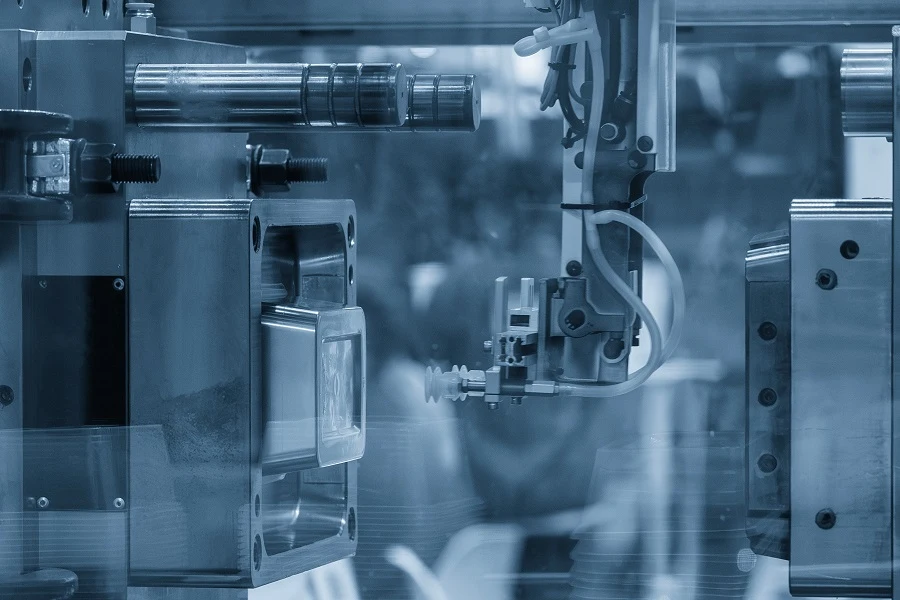
Equipment and Machinery Costs
Another factor influencing production costs is the type and size of injection molding machine required, especially for outsourced manufacturing. Machine selection depends on clamping force (determined by part size and projected area), shot size (how much material can be injected per cycle), and machine type (hydraulic, electric, or hybrid).
Small desktop machines cost $5.000-20.000, standard industrial machines range from $50.000-150.000, and large specialized machines can exceed $1.000.000. Machine selection impacts cycle time, energy consumption, and precision, affecting part cost and quality.
Breaking Down the Cost Structure for Injection Molding Price
If you want to produce plastic components efficiently, you’ll need to understand the cost drivers behind injection molding. Let's break down the key elements that contribute to the final per-part price.
Fixed Costs vs. Variable Costs: A Critical Distinction
To accurately budget for injection molding, it's vital to differentiate between fixed and variable expenses:
Calculating the Cost per Part: A Simple Formula
The total cost per part can be calculated as follows:
Cost per part = (fixed costs ÷ number of parts) + variable costs per part
For example, imagine you're producing a custom closure for a bottle:
- Fixed costs (mold): $20.000
- Variable costs per part: $0.75
- Production volume: 10.000 units
Cost per part = ($20.000 ÷ 10.000) + $0.75 = $2.75 per part
This illustrates a crucial point: as production volume increases, the impact of fixed costs on the per-part price diminishes significantly. With a production volume of 100.000 units, the mold cost would only contribute $0.20 to each part's price, reducing the total to $0.95 per part!
The Role of Labor and Automation in Cost
Labor costs vary significantly by location and level of automation.
Regional labor cost variation:
- North America/Europe: $25-50/hour
- China/Southeast Asia: $3-10/hour
- Eastern Europe/Mexico: $8-20/hour
Automation can reduce labor costs, but typically requires larger production volumes to justify the investment. For example, fully automated production lines might cost 3-5 times more than manual operations, but can reduce labor costs by 60-80 percent while improving consistency.
Cost Comparison by Production Volume
For prototypes and small production runs, cost-efficiency often needs different approaches than mass production.
Small-Volume Production (100-1.000 Units)
To optimize costs for low volumes, consider using 3D printed molds for small runs (under 200 units), choose aluminum instead of steel for the mold, simplify part design to reduce mold complexity, and minimize post-processing requirements. Many manufacturers offer "rapid tooling" options designed for lower-volume production at reduced costs.
Mid-Volume Production (5.000-10.000 Units)
Mid-volume production typically marks the transition point where injection molding becomes significantly more cost-effective than other manufacturing methods.
Cost optimization strategies for mid-volume production include using pre-hardened steel or high-grade aluminum molds, considering multi-cavity molds if appropriate, outsourcing to regions with lower labor costs, and optimizing cycle times through design refinements. At this volume, balancing mold investment against per-part production efficiency is critical.
High-Volume Production (100.000+ Units)
For high-volume production, the focus shifts to maximizing efficiency and minimizing per-part costs.
High-volume cost optimization strategies include investing in higher-quality multi-cavity molds, fully automating part removal and quality control, negotiating volume discounts on materials, optimizing facility layout for maximum efficiency, and considering dedicated production lines. At these volumes, even small per-part savings compound into significant cost reductions.
Types of Molds and Their Cost Implications
The type of mold used in injection molding significantly impacts the quality of the final product and the overall production cost. To make an informed decision for your project, be sure to understand the different mold types.
Single Cavity vs. Multi-Cavity Molds
The number of cavities in a mold directly impacts upfront cost and production efficiency. Single-cavity molds cost less initially ($1.000-15.000), and feature simpler design and maintenance requirements, but result in longer production times and higher per-part costs. They're ideal for low-to-medium-volume production.
Multi-cavity molds cost more upfront ($15.000-100.000+) and have more complex design and maintenance needs, but they offer faster production by creating multiple parts per cycle, resulting in lower per-part costs. They're ideal for medium-to-high-volume production.
The cost-benefit crossover point where a multi-cavity mold becomes more economical typically falls between 10.000-50.000 parts, depending on part complexity and size. The actual calculation requires comparing the higher initial investment against the production efficiency gained over the project lifecycle.
Family Molds
Family molds produce different parts in a single cycle, which is ideal for components that will be assembled. They offer advantages including reduced setup time, lower overall mold cost compared to separate molds, material consistency across components, and simplified inventory management.
However, they present challenges including more complex design requirements, difficulty balancing different part sizes in the same mold, the need for more advanced manufacturing capabilities, and typically 15-30 percent higher costs than single-part molds. Family molds make the most sense when producing complementary parts that must maintain consistent material properties and appearance.
Steel vs. Aluminum Molds
The mold material choice significantly impacts both cost and longevity.
To decide, you’ll want to factor in production volume requirements, part complexity, and anticipated product lifecycle.
Ready for Customized Packaging Containers?
Injection molding costs can be confusing and overwhelming. Let Ashland Container help you design cost-effective, high-quality packaging solutions tailored to your specific container needs.
Ashland Container — Your Trusted Packaging Container Supplier
Injection molding costs can be complex to estimate due to the many variables involved. Don’t let this overwhelm or stop you from optimizing your manufacturing process. We’re here to help you understand the key factors and make informed decisions.
To move forward with your injection molding project, finalize your part design with DFM principles in mind, determine your initial and long-term production volumes, select appropriate materials based on functional requirements, request quotes from multiple qualified manufacturers, review quotes for completeness and comparable specifications, and consider the total cost of ownership rather than just per-part pricing.
Need guidance on your injection molding quote? Get your injection molding cost estimate now and take the guesswork out of planning. The packaging specialists at Ashland Container are here to assist with your injection molding estimate and help you find the most cost-effective, high-quality solution.

